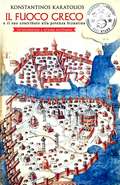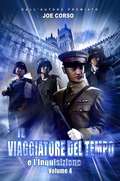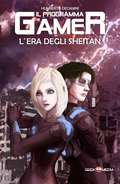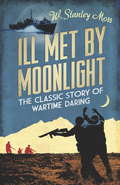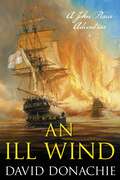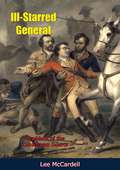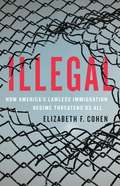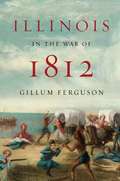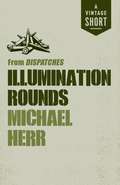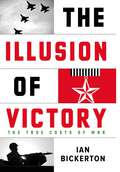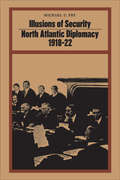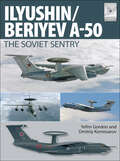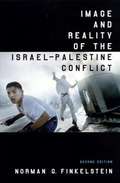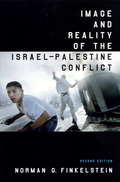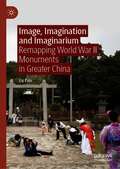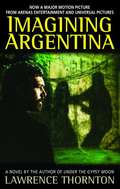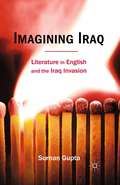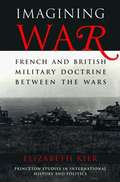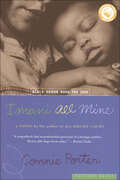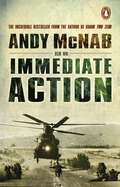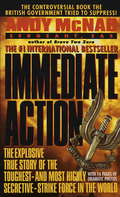- Table View
- List View
Il Fuoco Greco e il suo contributo alla potenza bizantina: Un'introduzione a un'arma terrificante
by Konstantinos KaratoliosIl millenario Impero Bizantino non avrebbe potuto durare così a lungo senza un potente esercito che gli permettesse di difendersi dalle continue sfide dei suoi tanti nemici esterni. In questo contesto, l’eredità lasciata dai Romani fu tanto importante quanto l’adozione di nuove armi e tattiche in battaglia. Il "Fuoco greco", fu certo la più famosa di queste armi anche se non necessariamente la più importante. Fu utilizzato durante tutto l'impero bizantino e garantì clamorose vittorie navali. Quest'arma terrificante era leggendaria ma quasi tutto ciò che sappiamo di essa e dei suoi usi è offuscato dalla vaghezza dei resoconti contemporanei. In questo lavoro, Konstantinos Karatolios tenta di rispondere a una serie di domande riguardanti il Fuoco Greco: quale era la formula? Quanto è stato efficace? Chi fu il suo vero inventore? Com'è stato usato nelle battaglie terrestri e navali? Questo libro si propone non solo di fornire una panoramica dello stato attuale della ricerca che può essere facilmente letto dai non specialisti, ma anche di dare il proprio contributo allo studio della materia, nel rispetto dei metodi di ricerca accademici.
Il Viaggiatore del Tempo e l'Inquisizione
by Joe Corso Mariel BragaLasciate che Lucky Campo scopra qualcosa in più sulle sue abilità. Lasciate i cinesi trovare questo di estrema importanza per il loro paese. Quello che cominciò come una bella notizia diventò una maledizione. Sembra che la vita di Lucky sia piena di sorprese e il suo dilemma è come gestirle tutte. L'amore della sua vita vive in un'altro periodo nel tempo, non ostante Lucky cerca i lussi del presente. L'Inquisizione quasi sigilla quei pensieri. I preti spagnoli dell'Inquisizione non capiscono niente riguardo a Lucky, il mago del Re. Mentre le piaghe abbondano, diventano sempre più convinti della sua stregoneria. La vecchia banda è sempre con Lucky e come al solito, gli coprono le spalle, ma c'è ancora sufficiente tempo rimanente? Possono debellare le bestiali tattiche di Qiang Shan, il Direttore della Polizia Segreta Cinese? Chi è che ha tradito Lucky? E dov'è la Principessa? Viaggiamo dai dinosauri alle piramidi, all'Inghilterra del dodicesimo secolo e di ritorno all'Astoria. Ah, caro vecchio Astoria. La vita non è mai noiosa mentre Lucky viaggia attraverso i Portali del Tempo.
Il caso Baikal
by Louis P KichaNel 1970, un aereo spia con a bordo un’arma mortale segreta viene dato per disperso sull’Unione Sovietica; posizione sconosciuta. Quaranta anni dopo, la sua presenza viene rilevata nelle profondità del Lago Baikal in Russia. Ora si tratta di recuperare la terribile arma prima che cada nelle mani del nemico!
Il programma Gamer: L'era Degli Sheitan (Il programma Gamer #1)
by Humberto DecaniniIl mondo come lo conosciamo è finito; i mostri sono emersi dall'interno del terreno e distruggono tutto ciò che il genere umano ha costruito negli ultimi cinque anni e migliaia. La metà della popolazione è morta a causa dei demoni noti come sheitans. Non ci sono abbastanza soldati per affrontare il filo, quindi il governo guarda un gruppo di persone che sa esattamente come sconfiggere questo tipo di nemico; lo hanno fatto fin dall'infanzia. Sono i GIOCATORI. In questo mondo, i prodotti di videogiochi per controllare i venti delle persone e renderli soldati, in grado di combattere contro qualsiasi tipo di nemico. Ora è il momento più importante del vero destino dei videogiochi. Questo è il primo terzo di una serie in tre parti.
Il-2 Shturmovik Guards Units of World War 2
by Oleg Rastrenin A. YurgensonOver 43,000 Il-2/10s were built between 1941 and 1955, more than any other combat aircraft in history, making this one of the most important Soviet aircraft deployed in World War II (1939-1945). Built originally as a two-seater, the Il-2 had lost the rear gunner's position by the time the aircraft started to reach frontline units. Armed with ground-attack rockets, the aircraft proved deadly against Wehrmacht panzers as pairs of Il-2s roamed the frontline at low level. However, the Shturmoviks (armored attackers) were vulnerable to attack from the rear by enemy fighters, so Ilyushin reverted to the two-seat layout in September 1942. Oleg Rastrenin provides a fascinating account of the complex development history of a plane that was crucial to Russia's defense. From Stalingrad to Kursk to Berlin, this book charts the airplane's vital contribution to the most famous battles of the Eastern front.
Ill Met By Moonlight
by W. Stanley MossNOW WITH AN INTRODUCTION BY W. STANLEY MOSS'S DAUGHTER GABRIELLA BULLOCK AND AN AFTERWORD BY PATRICK LEIGH FERMORIll Met By Moonlight is the true story of one of the most hazardous missions of the Second World War. W. Stanley Moss is a young British officer who, along with Major Patrick Leigh Fermor, sets out in Nazi-occupied Crete to kidnap General Kreipe, Commander of the Sevastopool Division, and narrowly escaping the German manhunt, bring him off the island - a vital prisoner for British intelligence.As an account of derring-do and wartime adventure, made into a classic film starring Dirk Bogarde, Ill Met By Moonlight is one of the most brilliantly written, exciting and compelling stories to come out of the Second World War.
Ill Met By Moonlight (Cassell Military Paperbacks Ser.)
by W. Stanley MossNOW WITH AN INTRODUCTION BY W. STANLEY MOSS'S DAUGHTER GABRIELLA BULLOCK AND AN AFTERWORD BY PATRICK LEIGH FERMORIll Met By Moonlight is the true story of one of the most hazardous missions of the Second World War. W. Stanley Moss is a young British officer who, along with Major Patrick Leigh Fermor, sets out in Nazi-occupied Crete to kidnap General Kreipe, Commander of the Sevastopool Division, and narrowly escaping the German manhunt, bring him off the island - a vital prisoner for British intelligence.As an account of derring-do and wartime adventure, made into a classic film starring Dirk Bogarde, Ill Met By Moonlight is one of the most brilliantly written, exciting and compelling stories to come out of the Second World War.
Ill Wind: A John Pearce Adventure (John Pearce)
by David DonachieIt is 1793. John Pearce and his Pelicans are going home - to gain their freedom and put the treacherous Captain Ralph Barclay in the dock. Emily Barclay discovers Pearce has papers that would ruin her husband&’s career and her future security. And then comes that dread thing: a fire aboard a wooden ship of war! Cast adrift, Pearce and his Pelicans find help from an unlikely source. Finally, back on British soil, they hope they have reached the end of their troubles, but with the documents missing, the real concerns have only just begun. Emily Barclay holds the key, but where do her loyalties lie?
Ill-Starred General: Braddock of the Coldstream Guards
by Lee McCardellA rare combination of documented fact and good storytelling, Ill-Starred General is the biography of a much maligned man from one of history’s most vital eras. The career of Edward Braddock began during the court intrigues of Queen Anne and George I, gained momentum in continental military campaigns in the early 1750s, and ended abruptly in the rout of his American army near present-day Pittsburgh in 1755. This highly acclaimed biography reveals the man—and the politics—behind his defeat, one of the major setbacks to British imperial power in the American colonies.“Braddock was the first English general that Americans had ever seen in action, and although he lost his life fighting for them, they detested him...What [McCardell] has done is to replace a historical puppet with a credible human being, and...to explain how a carefully planned colonial expedition can go wrong.”—Naomi Bliven, The New Yorker“The breadth, depth and care of McCardell’s research on Ill-Starred General are amazing and delightful. He has labored with that fidelity which every honest historian must display and with that luck which crowns the efforts of the fortunate.”—George Swetnam, Pittsburgh Press“A first-rate biography.”—Lynn Montross, New York Times“A genial and readable interpretation that will revivify an important figure in early American history. It is the kind of well-documented book that will appeal to both the general reader and the historian.”—W. R. Jacobs, American Historical Review
Illegal: How America's Lawless Immigration Regime Threatens Us All
by Elizabeth F. CohenA political scientist explains how the American immigration system ran off the rails -- and proposes a bold plan for reform Under the Trump administration, US immigration agencies terrorize the undocumented, target people who are here legally, and even threaten the constitutional rights of American citizens. How did we get to this point? In Illegal, Elizabeth F. Cohen reveals that our current crisis has roots in early twentieth century white nationalist politics, which began to reemerge in the 1980s. Since then, ICE and CBP have acquired bigger budgets and more power than any other law enforcement agency. Now, Trump has unleashed them. If we want to reverse the rising tide of abuse, Cohen argues that we must act quickly to rein in the powers of the current immigration regime and revive saner approaches based on existing law. Going beyond the headlines, Illegal makes clear that if we don't act now all of us, citizen and not, are at risk.
Illinois in the War of 1812
by Gillum FergusonRussell P. Strange "Book of the Year" Award from the Illinois State Historical Society, 2012. On the eve of the War of 1812, the Illinois Territory was a new land of bright promise. Split off from Indiana Territory in 1809, the new territory ran from the junction of the Ohio and Mississippi rivers north to the U.S. border with Canada, embracing the current states of Illinois, Wisconsin, and a part of Michigan. The extreme southern part of the region was rich in timber, but the dominant feature of the landscape was the vast tall grass prairie that stretched without major interruption from Lake Michigan for more than three hundred miles to the south. The territory was largely inhabited by Indians: Sauk, Potawatomi, Kickapoo, and others. By 1812, however, pioneer farmers had gathered in the wooded fringes around prime agricultural land, looking out over the prairies with longing and trepidation. Six years later, a populous Illinois was confident enough to seek and receive admission as a state in the Union. What had intervened was the War of 1812, in which white settlers faced both Indians resistant to their encroachments and British forces poised to seize control of the upper Mississippi and Great Lakes. The war ultimately broke the power and morale of the Indian tribes and deprived them of the support of their ally, Great Britain. Sometimes led by skillful tacticians, at other times by blundering looters who got lost in the tall grass, the combatants showed each other little mercy. Until and even after the war was concluded by the Treaty of Ghent in 1814, there were massacres by both sides, laying the groundwork for later betrayal of friendly and hostile tribes alike and for ultimate expulsion of the Indians from the new state of Illinois. In this engrossing new history, published upon the war's bicentennial, Gillum Ferguson underlines the crucial importance of the War of 1812 in the development of Illinois as a state. The history of Illinois in the War of 1812 has never before been told with so much attention to the personalities who fought it, the events that defined it, and its lasting consequences. Endorsed by the Illinois Society of the War of 1812 and the Illinois War of 1812 Bicentennial Commission.
Illumination Rounds: from Dispatches
by Michael HerrFresh in his boots and three days in-country, Michael Herr is in a Chinook when a young soldier across from him is gunned. “It took me a month to lose that feeling of being a spectator to something that was part game, part show.” Written in unforgettable and unflinching detail, Herr captures the chaos and fervor of the war and the surreal insanity of life in that singular combat zone. Selected from Dispatches, one of "the best book to have been written about the Vietnam War" (The New York Times Book Review) and an instant classic straight from the front lines.A Vintage Shorts Vietnam Selection. An ebook short.
Illusion Of Victory: The True Costs of Modern War
by Ian BickertonThe Illusion of Victory demonstrates that most of the rewards of victory in modern warfare are either exaggerated or false. When the ostensible benefits of victory are examined a generation after a war, it becomes inescapably evident that the defeated belligerent rarely conforms to the demands and expectations of the victor. Consequently, long-term political and military stability is denied to both the victorious power and to the defeated one. As a result, neither victory nor defeat deter further outbreaks of war. This sobering reality is increasingly the case in the twentieth and twenty-first centuries. Ian Bickerton persuasively argues that as the rhetoric of victory becomes more hollow all countries must adopt creative new approaches to resolving disputes.
Illusions of Security: North Atlantic Diplomacy 1918-22
by Michael FryThe First World War was in many ways the most formative experience for the western world in the twentieth century. Little if anything of importance escaped its influence. For those who helped shape foreign and deference policies in Britain, the United States, and Canada, the war and the consequent peacemaking raised perplexing political, ideological, and racial problems. In their search for solutions, some among the anglophone elites of these three countries arrived at the idea of Atlanticism. To them it seemed possible that the British empire and the United States, the core of the victorious allied coalition, could create a global hegemony, an amended version of the Pax Britannica, which might provide a panacea for the ills of the postwar world. As their views became known, the Atlanticists met with some enthusiasm and much outright hostility. Deliberations for and against Atlanticism focused on renewal of the Anglo-Japanese alliance and on two vital postwar conferences, the Imperial Conference of 1921 and the Washington Conference of 1921-2. Initial prospects for Atlanticism seemed encouraging, but hopes were dashed in real political issues of war debts and European recovery by the end of 1922. The Atlanticist thesis languished and despite periods of co-operation it never regained its appeal throughout the interwar years. Michael Fry relates in fascinating detail the history of these deliberations and of the statesmen who worked for and against Atlanticism. His study sheds light on the evolution of foreign policy in Britain, the dominions, and the United States, and yields insights into relations between these governments during an important time in history.
Ilyushin/Beriyev A-50: The 'Soviet Sentry' (FlightCraft)
by Yefim Gordon Dmitriy KomissarovBrought out in the late 1970s as a successor to the obsolete Tu-126 airborne early warning aircraft, the A-50 co-developed by the Il'yushin and Beriyev bureaux is one of the most interesting military variants in the field of IL-76 military transport. Differing outwardly from the latter mainly in having a conventional saucer rotodome, the A-50 entered flight testing in 1980; the new Soviet AWACS entered service four years later. The improved A-50M was developed several years after that. The type continues in service with the Russian Air Force today, and the fleet is being upgraded to A-50U standard. This book describes the A-50's thrilling developmental history, taking in its many variants (including the A-50EI export model for India) and gives an extensive overview of the various scale model kits covering the subject currently available on the market.
Image and Reality of the Israel Palestine Conflict (2nd edition)
by Norman G. FinkelsteinFirst published in 1995, this polemical study challenges generally accepted truths of the Israel-Palestine conflict as well as much of the revisionist literature. This new edition critically re-examines dominant popular and scholarly images in the light of the current failures of the peace process.
Image and Reality of the Israel-Palestine Conflict
by Norman FinkelsteinThis acclaimed study surveys the dominant popular and scholarly images of the Israel-Palestine conflict. Finkelstein opens with a theoretical discussion of Zionism, locating it as a romantic form of nationalism that assumed the bankruptcy of liberal democracy. He goes on to look at the demographic origins of the Palestinians, with particular reference to the work of Joan Peters, and develops critiques of the influential studies of both Benny Morris and Anita Shapira. Reviewing the diplomatic history with Aban Eban's oeuvre as his foil, Finkelstein closes by demonstrating that the casting of Israel as the innocent victim of Arab aggression in the June 1967 and October 1973 wars is not supported by the documentary record. This new edition critically reexamines dominant popular and scholarly images in the light of the current failures of the peace process.From the Trade Paperback edition.
Image, Imagination and Imaginarium: Remapping World War II Monuments in Greater China
by Lu PanThis book explores five cases of monument and public commemorative space related to World War II (WWII) in contemporary China (Mainland), Hong Kong and Taiwan, all of which were built either prior to or right after the end of the War and their physical existence still remains. Through the study on the monuments, the project illustrates past and ongoing controversies and contestations over Chinese nation, sovereignty, modernism and identity. Despite their historical affinities, the three societies in question, namely, Mainland China, Hong Kong and Taiwan, vary in their own ways of telling, remembering and forgetting WWII. These divergences are not only rooted in their different political circumstances and social experiences, but also in their current competitions, confrontations and integrations. This book will be of great interest to historians, sinologists and analysts of new Asian nationalism.
Images from the Arsenal of Democracy: Images From The Arsenal Of Democracy
by Charles K. HydeWhile researching his previous study, Arsenal of Democracy: The American Automobile Industry in World War II (Wayne State University Press, 2013), award-winning automotive historian Charles K. Hyde discovered the many remarkable photos that were part of the era's historical documentation. In Images from the Arsenal of Democracy, Hyde presents a selection of nearly three hundred of these documentary photos in striking black and white, with brief captions. Taken together, the images create a captivating portrait of this crucial moment in American business, military, and cultural history. Images from the Arsenal of Democracy spans from 1940 until the end of the war, presenting up-close, rarely seen views of newly built plants and repurposed production lines, a staggering variety of war products and components, and the many workers behind Detroit's wartime production miracles. The human faces that Hyde presents are especially compelling, as photos show the critical role played by previously underused workers--namely women and African Americans. Images from the Arsenal is divided into chapters by theme, including "Preparing for War before Pearl Harbor"; "Planning Defense Production after Pearl Harbor"; "Aircraft Engines and Propellers"; "Aircraft Components and Complete Aircraft"; "Tanks and Other Armored Vehicles"; "Jeeps, Trucks, and Amphibious Vehicles"; "Guns, Shells, Bullets, and Other War Goods"; "The New Workers"; and "Celebrating the Production Achievements." The first comprehensive and detailed history drawn solely from the surviving photographic record of wartime Detroit, Images from the Arsenal will be appreciated by automotive historians, World War II scholars, and American history buffs.
Imagining Argentina
by Lawrence ThorntonImagining Argentina is set in the dark days of the late 1970's, when thousands of Argentineans disappeared without a trace into prison cells and torture chambers. When Carlos Rueda's wife is suddenly taken from him, he discovers a magical gift: In waking dreams, he had clear visions of the fates of "the disappeared. " But he cannot "imagine" what has happened to his own wife. Driven to near madness, his mind cannot be taken away: imagination, stories, and the mystical secrets of the human spirit. Note: Inconsistent use of accents in original text.
Imagining Iraq
by Suman GuptaIn the run-up to, during and after the invasion of Iraq a large number of literary texts addressing that context were produced, circulated and viewed as taking a position for or against the invasion, or contributing political insights. This book provides an in-depth survey of such texts to examine what they reveal about the condition of literature.
Imagining War: French and British Military Doctrine between the Wars (Princeton Studies In International History And Politics Series #153)
by Elizabeth KierIn richly detailed case studies, Kier examines doctrinal developments in France and Great Britain during the interwar period. <P><P>She tests her cultural argument against the two most powerful alternative explanations and illustrates that neither the functional needs of military organizations nor the structural demands of the international system can explain doctrinal choice. She also reveals as a myth the argument that the lessons of World War I explain the defensive doctrines in World War II.
Imani All Mine: A Novel
by Connie Rose Porter"With authority and grace" (Essence), Imani All Mine tells the story of Tasha, a fourteen-year-old unwed mother of a baby girl. In her ghettoized world where poverty, racism, and danger are daily struggles, Tasha uses her savvy and humor to uncover the good hidden around her. The name she gives her daughter, Imani, is a sign of her determination and fundamental trust despite the odds against her: Imani means faith. Surrounding Tasha and Imani is a cast of memorable characters: Peanut, the boy Tasha likes, Eboni, her best friend, Miss Odetta, the neighborhood gossip, and Tasha's mother, Earlene, who's dating a new boyfriend. Tasha's voice speaks directly to both the special pain of poverty and the universal, unconquerable spirit of youth. Authentic in every detail, this is an unforgettable story. As Seventeen declared, "Porter's candid narrative will have you hooked from the opening sentence."
Immediate Action
by Andy McNabImmediate Action is a no-holds-barred account of an extraordinary life, from the day Andy McNab was found in a carrier bag on the steps of Guy's Hospital to the day he went to fight in the Gulf War.As a delinquent youth he kicked against society. As a young soldier he waged war against the IRA in the streets and fields of South Armagh. As a member of 22 SAS Regiment he was at the centre of covert operations for nine years - on five continents.Recounting with grim humour and in riveting, often horrifying, detail his activities in the world's most highly trained and efficient Special Forces unit, McNab sweeps us into a world of surveillance and intelligence-gathering, counter-terrorism and hostage rescue.There are casualties: the best men are so often the first to be killed, because they are in front.By turns chilling, astonishing, violent, funny and moving, this blistering first-hand account of life at the forward edge of battle confirms Andy McNab's standing in the front rank of writers on modern war.
Immediate Action
by Andy McnabImmediate Action is a no-holds-barred account of an extraordinary life, from the day Andy McNab was found in a carrier bag on the steps of Guy's Hospital to the day he went to fight in the Gulf War. As a delinquent youth he kicked against society. As a young soldier he waged war against the IRA in the streets and fields of South Armagh. As a member of 22 SAS Regiment he was at the centre of covert operations for nine years - on five continents. Recounting with grim humour and in riveting, often horrifying, detail his activities in the world's most highly trained and efficient Special Forces unit, McNab sweeps us into a world of surveillance and intelligence-gathering, counter-terrorism and hostage rescue. There are casualties: the best men are so often the first to be killed, because they are in front. By turns chilling, astonishing, violent, funny and moving, this blistering first-hand account of life at the forward edge of battle confirms Andy McNab's standing in the front rank of writers on modern war.
